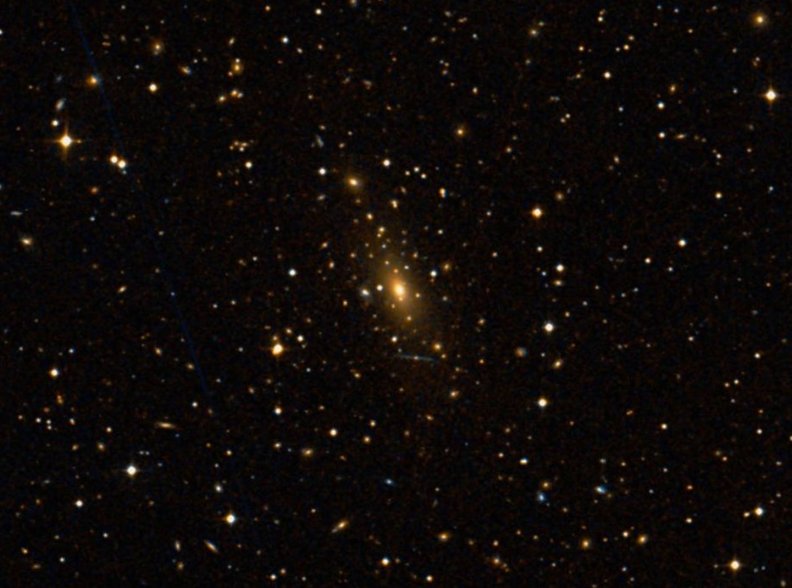Ic 1101

The Abell 2029 galaxy cluster contains IC 1101, a supergiant elliptical galaxy in its core. It is one of the most massive galaxies ever discovered. Its halo stretches 600 kiloparsecs (2 million light-years) outward from its nucleus. The galaxy's centre, which is the biggest known core to date, is home to a supermassive black hole, one of the largest black holes ever discovered. Earth is 320 megaparsecs (1.04 billion light-years) away from the galaxy. William Herschel, a British astronomer, discovered the galaxy on June 19, 1790.
Can you see IC 1101 Earth?
When seen from Earth, a lenticular galaxy is shown in its widest proportions. However, because most lenticular galaxies are between 50,000 and 120,000 light years broad, IC 1101 seems to be an elliptical galaxy.
Location of IC 1101
IC 1101 is a star cluster in the constellation Virgo, near the Serpens boundary. It's close to the globular cluster Messier 5 and the barred spiral galaxy NGC 5921 in the sky (also discovered by William Herschel). The galaxy, however, is much fainter than these two objects, at magnitude 14.73, and requires a bigger telescope to be viewed. It appears as a ball of light, as do all elliptical galaxies, and does not become more distinct even with the greatest telescopes.
Size of IC 1101
With a diameter of around 4 million light years, IC 1101's halo reaches over 2 million light years (600 kiloparsecs) from the centre, making it one of the biggest galaxies observed to date.
IC 1101 has an effective radius of around 212,000 light years and an angular dimension of 1.20 by 0.60 arcminutes. The effective radius, also known as the half-light radius, is the distance at which half of the galaxy's light is emitted. It does not reflect the galaxy's true size, which is difficult to determine because galaxies lack apparent limits and just get fainter as they go away from the centre.
Furthermore, the apparent size of a galaxy varies based on the telescope's size and sensitivity, as well as the amount of time it is watched. Longer exposures with larger telescopes will always disclose more information than shorter exposures with smaller telescopes. As a result, the half-light radius is employed as a reference point.
The massive size of IC 1101 is thought to be the consequence of numerous smaller galaxies colliding. Because of the numerous collisions, the galaxies have been stripped of their star-forming gas and dust, IC 1101 has very little active star formation.
IC 1011 compared to the Milky Way
The Milky Way has an observable diameter of 150,000 to 200,000 light years, while IC 1101 spans 4 million light years — other estimates put the galaxy's diameter at 6 million light years. The Milky Way, Andromeda, and Triangulum galaxies are all part of the Local Group, which spans 9.8 million light years. Andromeda, Triangulum, the Large and Small Magellanic Clouds, and everything in between would be engulfed if IC 1101 replaced our galaxy in the Local Group.
Even the Andromeda and Milky Way spiral galaxies pale in compared to IC 1101. The Condor Galaxy (NGC 6872) in Pavo and Malin 1 in Coma Berenices, both among the biggest spiral galaxies known, span 650,000 and 522,000 light years, respectively. The supergiant elliptical galaxy Messier 87 (Virgo A) at the centre of the Virgo Cluster has a diameter of 240,000 light years.
Posted By InnoTechzz